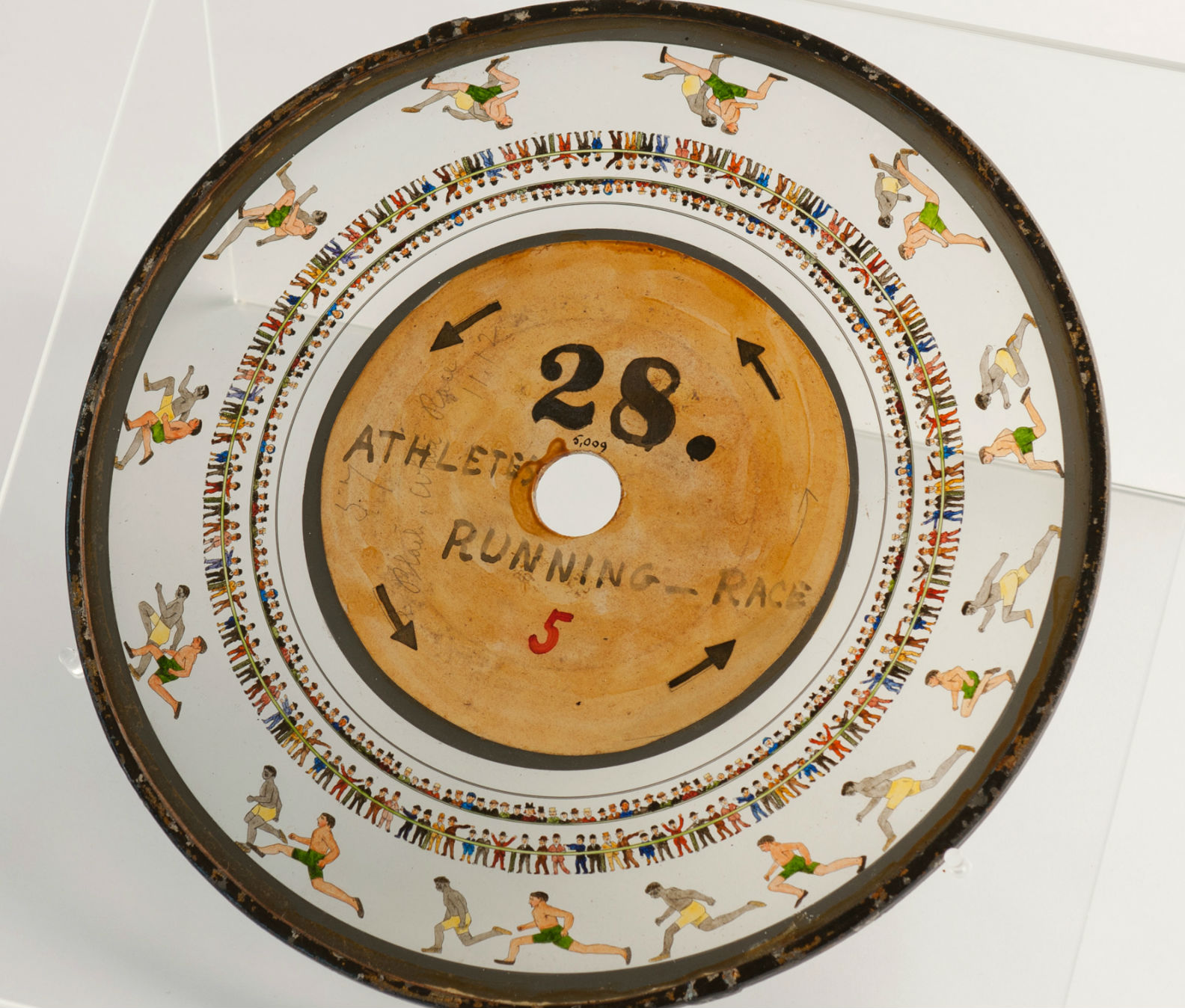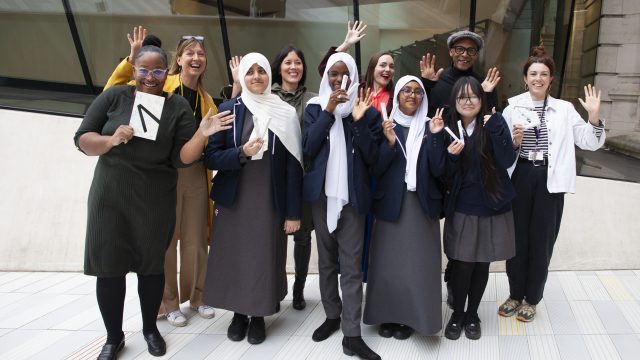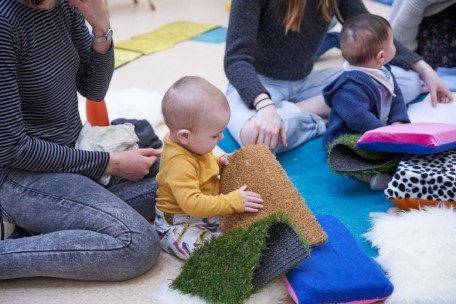This is a guest post by Chiara Russo, Learning and Engagement Officer at Kingston Museum & Heritage Service. Kingston Museum is part of the Kingston Hub, working with the Rose Theatre Kingston and their Youth Theatre on the Peter Brook Outreach Project.
It is 9.55 am on a Saturday morning. My colleague Jack and I are busy opening up the galleries, when we realise that people are already queuing outside of the doors. In the queue, I spot several young faces, and a familiar one. It’s Rosie, the excellent theatre practitioner from the Rose Theatre, who is bringing her group on a visit to the Museum as part of the “Peter Brook” project in partnership with the V&A.
Today’s visit is about discovering a bit of the Museum and its objects with the hope that something from the visit will help the group to devise a theatre performance. The group’s starting point is Peter Brook’s production of Marat/Sade, a play that caused much controversy when it was first performed in 1964, four years before the abolition of censorship in the UK. The play is a striking piece that questions society, labels, truth and mental endurance, exploring the boundaries of what is, by convention, socially acceptable and understandable.
Kingston Museum and its collections tell the story of the Borough from the Stone Age up until the 1960s, and is famous worldwide for Eadweard Muybridge’s bequest, who donated his whole collection of discs, zoetropes, photos and books to the Museum. The Museum displays, as can be currently seen, are a small tapestry of curious, precious and sometimes creepy objects which whisper their tales of invasion, settlement, trade and power within the Borough.
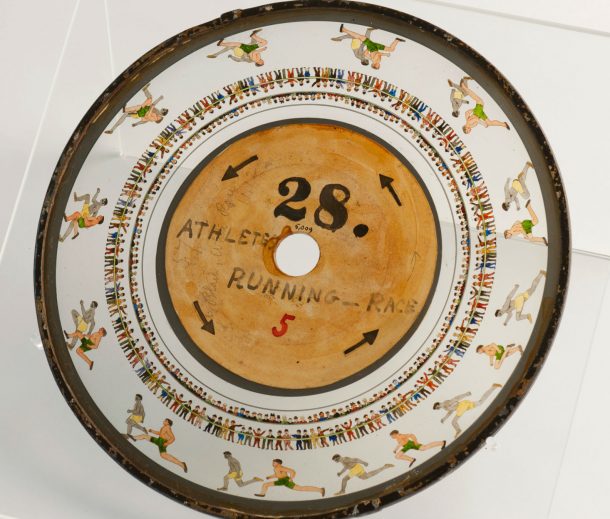
So, how to connect Peter Brook’s text (and, more widely, theatre practice) to the Museum’s objects, presented mostly in stand- alone, compartmented displays?
During the visit I selected some objects that question the concepts of “truth” and “perception”, trying to encourage the group to ask questions in order to unveil untold stories, impossible to find on the Museum’s official labels. As Marat/Sade is set in a mental asylum, I liked the idea of exploring how the boundaries defining madness and violence shifted consistently throughout the centuries and how sometimes objects silently carry the inheritance of a violent past.
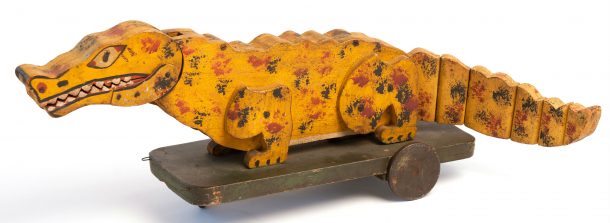
The very first stop of the Museum tour was in front of a set of police truncheons dating 19th century, used by Kingston own Police Force in the 1830s and 1840s. The truncheons are beautifully decorated, showing the crest of Kingston upon Thames but also endorsing the power given to the patrolling police in those decades. We discussed how crime and punishment were radically different from today, being more cruel but also unforgiving towards people affected by mental conditions. Progressing in the tour, I wanted to show the group a couple of objects whose story is not immediately visible, or recognisable by any decoration or symbol. We stopped in front of a wooden mobile crocodile toy, sold at Bentalls for 8 shillings in the 1920s. It is the Kingston crocodile, produced by women once working at the Sopwith Aircraft Ltd, a factory that provided gun and rotary engineered airplanes to the British air force during World War I. We reflected on how even objects that are made to be cheerful and bring joy can be connected to bigger tragedies of human history.
Our final stop was the Muybridge gallery, an opportunity to talk about photography and the Victorian sense of justice. Eadweard Muybridge underwent a trial for shooting his wife’s lover, but was eventually released as the jury, composed entirely by married men, admitted that they would have adopted the same behaviour. Lots of questions by the group flocked at this point: was it legal? Was it fair? What happened to Muybridge’s career and reputation?
The visit to the Museum was the starting point of a creative journey for the group. I don’t know if the young people will decide to incorporate any of the stories unveiled in their performance, either as a physical movement, a line of the script, or as a general concept. As a museum educator, my mission is to keep telling the stories of the objects by encouraging visitors to be inquisitive and curious, to make connections to critically learn from the displays as well as to unveil those stories that have been left aside by an informed choice.
Museums, perhaps similarly to performances, teach us that although perception shapes reality, perception cannot be taken as the reality. I hope that, through their journey around the galleries, the young people will devise a piece questioning the boundaries between perception and reality, subjectivity and social conventions.
